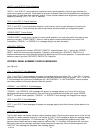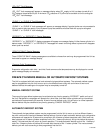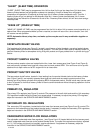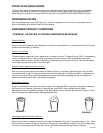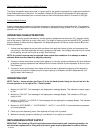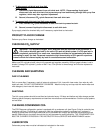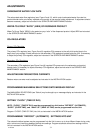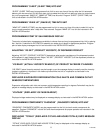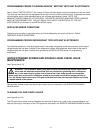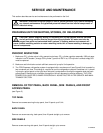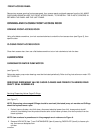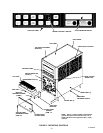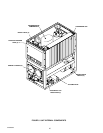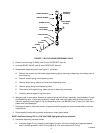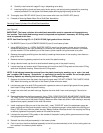
36312028000
PROGRAMMING FREEZE CYLINDERS BEATER “MOTORS” INTO UNIT ELECTRONICS
Note in Table 6 “MOTOR SELECT” the number of freeze cylinders beater motors manufacturer’s that are listed.
Your Unit was manufactured and equipped with motors from one of these manufacturer’s. A replacement freeze
cylinder beater motor is also manufactured by one of these manufacturer’s listed. NOTE THE
MANUFACTURER’S NAME ON THE MOTOR(S). THE BEATER MOTOR(S) MANUFACTURER’S NAME(S)
MUST BE PROGRAMMED INTO THE UNIT WHICH WILL MATCH THE MOTOR(S) TO THE UNIT
ELECTRONICS as instructed in the INSTALLATION section.
DISPLAYED ERROR CONDITIONS
Displayed error conditions, associated errors, and items affected by the errors are found in Table 9
DISPLAYED ERROR CONDITIONS.
PROGRAMMING PROPER REFRIGERANT TYPE INTO UNIT ELECTRONICS
The dispenser electronics must be programmed for the proper refrigeration pulse rate according to the type of
refrigerant gas that has been installed in the refrigeration system. Note dispenser serial plate for the type of
refrigerant gas that has been installed, then proceed to the INSTALLATION section for programming
instructions.
WATER STRAINER SCREEN AND DOUBLE LIQUID CHECK VALVE
MAINTENANCE
(see Figures 2 and 12)
WARNING: The carbonator water pump water strainer screen and the double liquid check
valve must be inspected and serviced after any disruptions (plumbing work, earthquake,
etc.) to the water supply system, and at least once a year under normal circumstances.
Water pump with no screen or a defective screen in the strainer would allow foreign particles to
foul the double liquid check valve. CO
2
gas could then back flow into the water system and create
a health hazard in the system.
Service water strainer screen and double liquid check valve as instructed in the SERVICE AND MAINTE-
NANCE section.
CLEANING CO
2
GAS CHECK VALVES
(see Figure 2 and 13)
The CO
2
gas check valves must be inspected and serviced at least once a year under normal conditions, and
after any servicing or disruption of the CO
2
system as instructed in the SERVICE AND MAINTENANCE section.



